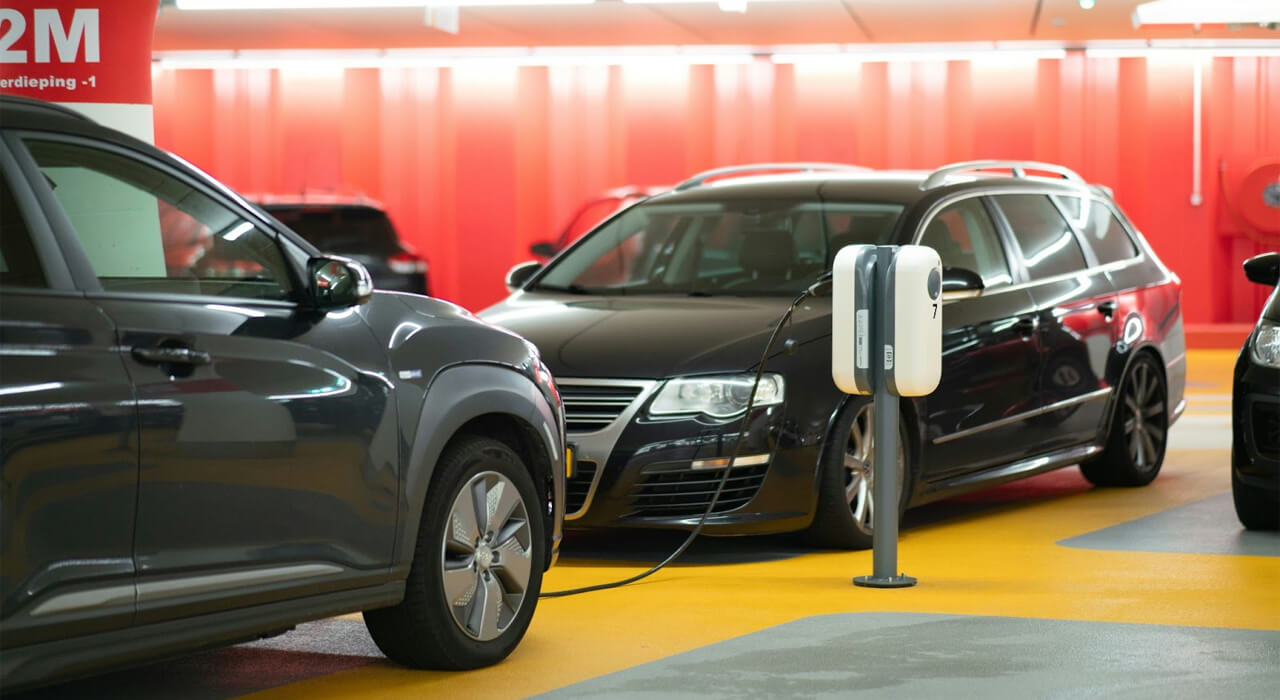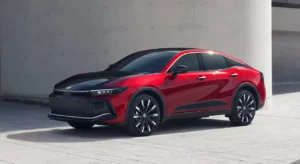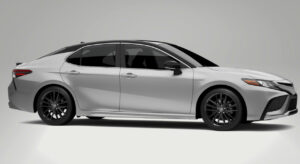In today’s ever-evolving automotive landscape, hybrid cars have emerged as a significant technological advancement. Combining traditional combustion engine power and electric propulsion, hybrid vehicles represent a crucial step toward a more sustainable and fuel-efficient future.
In this comprehensive guide, we’ll delve into the inner workings of hybrid cars, explore their key components, understand their operational principles, and discuss why they are essential in the modern automotive industry.
Understanding Hybrid Technology
A sophisticated propulsion system that seamlessly integrates internal combustion engines with electric motors is at the heart of every hybrid car. Unlike conventional gasoline-powered vehicles, hybrids utilize multiple power sources to optimize fuel efficiency and reduce emissions. There are several types of hybrid configurations, including:
- Parallel Hybrid: In a parallel hybrid system, the internal combustion engine and the electric motor are connected to the transmission, allowing them to work together or independently to drive the vehicle. The electric motor assists the engine during acceleration, deceleration, and low-speed driving while the engine powers the vehicle at higher speeds or when additional power is required.
- Series Hybrid: In contrast, a series hybrid employs the internal combustion engine solely as a generator to charge the battery pack. At the same time, the electric motor provides propulsion to drive the wheels. The engine operates optimally to generate electricity, powers the electric motor, and charges the battery, extending the vehicle’s range.
- Plug-in Hybrid: A plug-in hybrid (PHEV) combines the features of conventional hybrids with the ability to recharge the battery from an external power source, such as a wall outlet or charging station. This allows PHEVs to operate in full electric mode for a certain distance before switching to hybrid mode, offering enhanced fuel savings and reduced emissions during short commutes.
Key Components of Hybrid Cars
Hybrid vehicles incorporate several essential components that enable seamless operation between the internal combustion engine and the electric motor:
- Battery Pack: The battery pack stores electrical energy generated from regenerative braking and the engine’s operation. Typically located in the rear or under the rear seats, it provides power to the electric motor and supplements the engine’s output when necessary.
- Electric Motor: The electric motor serves as the primary source of propulsion in hybrid cars, delivering instant torque and smooth acceleration. It works with the engine to optimize fuel efficiency and reduce emissions, mainly during low-speed driving and stop-and-go traffic conditions.
- Power Control Unit (PCU): The PCU manages the flow of electrical energy between the battery, motor, and engine, ensuring seamless integration and optimal performance. It regulates power distribution and adjusts the operation of each component based on driving conditions and demand.
- Regenerative Braking System: Hybrid vehicles utilize regenerative braking to capture kinetic energy during deceleration and braking, converting it into electrical energy to recharge the battery. This innovative technology improves overall efficiency and extends the vehicle’s range by harnessing energy that would otherwise be lost as heat.
Suggestion: 15 Best SUVs For Women for Comfort and Style
Why Hybrid Cars Matter for Safety?
In addition to their environmental benefits and fuel efficiency, hybrid cars also prioritize safety features to protect drivers, passengers, and pedestrians alike. Here’s how hybrid technology contributes to safer roads:
- Advanced Driver Assistance Systems (ADAS): Many hybrid vehicles come equipped with advanced driver assistance systems, such as lane-keeping assist, adaptive cruise control, and automatic emergency braking. These features utilize sensors and cameras to monitor the vehicle’s surroundings and assist the driver in avoiding accidents.
- Enhanced Visibility: Hybrid cars often incorporate design elements that improve visibility for the driver, such as higher seating positions and large windows. Better visibility enables drivers to anticipate and react to potential hazards on the road, reducing the risk of collisions, especially in busy urban environments.
- Structural Integrity: Hybrid vehicles are engineered with safety in mind, featuring reinforced frames, crumple zones, and advanced materials to withstand impacts and protect occupants in the event of a collision. These structural enhancements contribute to higher crash safety ratings and provide peace of mind for drivers and their families.
- Reduced Noise Pollution: Hybrid cars operate more quietly than their gasoline counterparts, emitting less noise pollution and making them easier to hear for pedestrians and cyclists. This can help prevent accidents, particularly in urban areas where traffic congestion and pedestrian activity are prevalent.
- Emergency Response: In the event of an accident, hybrid cars are designed with safety systems that automatically disconnect the high-voltage battery to prevent electrical hazards and facilitate emergency response efforts. This ensures the safety of first responders and minimizes the risk of post-crash complications.
In the event that a car accident occurs, contact a Buffalo, New York accident attorney, to help get you compensation for your injuries.
Operational Principles of Hybrid Cars
The operation of hybrid cars is governed by sophisticated control systems that prioritize fuel efficiency, performance, and emissions reduction. Here’s a simplified overview of how hybrid vehicles work:
- Starting and Acceleration: When the driver starts the vehicle or accelerates from a standstill, the electric motor provides instant torque to propel the car forward. In parallel hybrids, the engine may also engage to provide additional power or recharge the battery if needed.
- Cruising and Low-Speed Driving: During steady-state cruising or low-speed driving, the electric motor powers the vehicle, drawing energy from the battery pack. This mode of operation is highly efficient and produces minimal emissions, especially in urban environments where traffic congestion is common.
- High-Speed Driving and Heavy Loads: When the vehicle requires more power for high-speed driving or climbing steep grades, the internal combustion engine kicks in to provide additional propulsion. In parallel hybrids, the engine and electric motor may work together to deliver optimal performance and fuel efficiency.
- Regenerative Braking: As the driver decelerates or applies the brakes, the regenerative braking system recaptures kinetic energy and converts it into electrical energy to recharge the battery. This energy-saving feature enhances overall efficiency and reduces wear on the braking system.
Suggestion: Most-Affordable Luxury Cars With Massage Seats
Why Hybrid Cars Matter?
Hybrid cars play a crucial role in addressing the environmental challenges associated with traditional gasoline-powered vehicles. Here are several reasons why hybrids matter in today’s automotive landscape:
- Reduced Fuel Consumption: By combining the efficiency of electric propulsion with the range of internal combustion engines, hybrid vehicles significantly reduce fuel consumption and greenhouse gas emissions compared to conventional cars. This translates to lower operating costs for drivers and a smaller carbon footprint for the planet.
- Improved Air Quality: With their lower emissions and cleaner operation, hybrid cars contribute to improved air quality in urban areas, where pollution from vehicle exhaust is a major concern. By promoting the adoption of hybrid technology, governments and policymakers can mitigate the adverse health effects of air pollution and combat climate change.
- Technological Innovation: Hybrid cars serve as a platform for ongoing technological innovation and research in the automotive industry. Manufacturers are continually developing new hybrid systems, improving battery technology, and enhancing vehicle efficiency to meet evolving consumer demands and regulatory requirements.
- Transition to Electrification: Hybrids play a vital role in the transition towards full electrification of the automotive sector. They serve as a stepping stone for consumers who may be hesitant to switch to fully electric vehicles due to concerns about range anxiety or charging infrastructure. By offering the benefits of electric propulsion without the limitations of pure EVs, hybrids help accelerate the adoption of cleaner transportation solutions.
- Energy Independence: By reducing reliance on fossil fuels and promoting the use of electricity as a primary energy source, hybrid cars contribute to energy independence and security. With advancements in renewable energy generation, such as solar and wind power, hybrid vehicles can be powered by clean, domestically produced electricity, further enhancing their environmental benefits.
Conclusion
In conclusion, hybrid cars represent a significant milestone in the automotive industry’s quest for sustainability and innovation. By integrating internal combustion engines with electric motors, hybrids offer a practical solution to reducing fuel consumption, lowering emissions, and mitigating the environmental impact of transportation.
As technology continues to advance and consumer preferences shift towards cleaner and more efficient vehicles, hybrids are poised to play a central role in shaping the future of mobility. Whether through improved fuel economy, enhanced performance, or reduced environmental footprint, hybrid cars are not just a mode of transportation—they are a symbol of progress towards a greener and more sustainable future.







I see hybrid cars as a connection between the past and the present.
Hybrid cars are extending worldwide as it’s affordable and lucrative even I want one as well
I’m all for nice looking utility cars